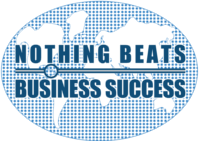“You will be enriched in every way for your great generosity, which will produce
thanksgiving to God.” – 2 Corinthians 9:11
In my everyday activity, primarily shepherding start-ups (with the DNA of an Elephant), as they embark on a journey to fulfill their ambitions of sustainable success in the global marketplace, I meet and interact with many global players.
One such interaction took place this week over Skype with two open innovation consultants, one based in the U.S. (Dr. Owen Carryl) and the other in the U.K. (Mark McBride).
I certainly am enriched by these events as we share each other’s knowledge and experience.
Indeed, I am also fulfilled when I interact with my clients over a wide range of economic disciplines. As I appreciate others, I also feel better about myself.
Owen and Mark have worked together in the past matching business ideas with technology and global markets to create innovative global trade opportunities. The purpose of the Skype intervention was specific but as we were laying the foundation for our discussion we were sidetracked by an observation of the relationship between big business, small business and their contribution to sustainable economic growth.
Mark referred to the contribution that small businesses make to the growth of an economy. I thought I heard him say that small businesses actually drive the economy.
I offered another opinion by saying that surely it was the bigger businesses that were the drivers of the economy and that smaller businesses played a supporting role. Mark’s response suggested that if I could be convincing he would meet me half way.
My argument was based on the assumption that small businesses, apart from selling directly to the consumer, may depend on the markets provided by bigger businesses in the context of an economic gearing system. This economic gearing system is analogous to a mechanical gearing system where the bigger wheel relates to the smaller wheel in accordance with a gear ratio which defines the number of revolutions generated by the smaller wheels for one revolution (the drive) of the larger wheel.
In the context of the economic gearing system, then, if the advent of tourists in hotels or on cruise visits (the drive) into a destination turned one revolution, then the smaller businesses (e.g. taxis, handicraft makers, tourist attractions, car rentals, local tour operators) for which a market has been created by the driving force, would experience greater activity in the context of the appropriate economic gearing ratio. In this sense, I concluded, several revolutions of the advent of tourists would be a driving force for the growth of the economy.
At this point Owen intervened. Wait a minute! Do you know that in recent times the rate of innovation from small businesses is much greater than for larger businesses?
This hypothesis is supported by Mike Templeman in an article entitled “Innovation: Small Businesses Live It, Big Businesses Buy It” in the March 2014 edition of Entrepreneur Magazine.
He wrote: “There is a recurring theme in the business world. Large companies are becoming bogged down with processes, are worried of investor confidence and their bloated management system is making it difficult for them to come up with innovative ideas. So what do they do? They gobble up smaller companies.”
I subsequently found some more detailed evidence to support the contribution made by Mark regarding smaller businesses as the drivers of economic growth from blog.surepayroll.com.
It is reproduced here:
“While companies like Walmart and Home Depot make headlines as bellwethers of the U.S. economy, small businesses create more than 60 percent of new jobs. That’s why tracking the progress of small firms is so important to us. We know companies are a big driver of the economy, but just how much do small businesses contribute to hiring, growth, innovation?
“According to the Bureau of Labour Statistics (BLS): over 50% of businesses experiencing high growth had under 10 employees; between 1992 and 2013, 41.8% of employment change came from small businesses; toward the end of September 2013, small businesses were responsible for a net increase of 174,000 out of 386,000 jobs; and in the third quarter of 2013, 30% of net growth came from firms with 1-49 employees.”
There is now some justification for me to soften my argument and meet Mark half way.
We went back to the purpose of our Skype call with me promising to share some thoughts in this column on some issues of innovation and economic growth.
Once more, in a discussion with Owen I have broadened my knowledge of Innovation and its importance as a business strategy.
I gave a guest lecture to MBA students at Arthur Lok Jack School of Business in Trinidad just over 18 months ago.
The participants were entrepreneurs in the making and existing entrepreneurs. My mission was to introduce the participants to the CBET Shepherding Model™ and the ManOBiz Matrix™ shepherding tool. There was one participant who wanted me to extend the ManOBiz Matrix business systems from five to six to introduce Innovation as a sixth business system.
I did not yield because I had already included Innovation in the four pillar Construct of an Enterprise as the activity which converts a business idea into a product or service for sale.
The other pillars of the construct are the entrepreneur whose job it is to enhance profitability, and the shepherding process which mitigates the risk of business failure and secures the capital investment.
Time will tell whether Owen and Mark will influence my innovation perspective as we continue our dialogue in search of future collaboration opportunities.
In the meantime, let us cherish the good moments and the difficulties that help us grow.
Let us also appreciate others as this process enriches us and enables us to feel better about ourselves.
Life is good!
(Dr. Basil Springer GCM is Change-Engine Consultant, Caribbean Business Enterprise Trust Inc. – CBET. His columns may be found at www.cbetmodel.org and www.nothingbeatsbusiness.com.)
